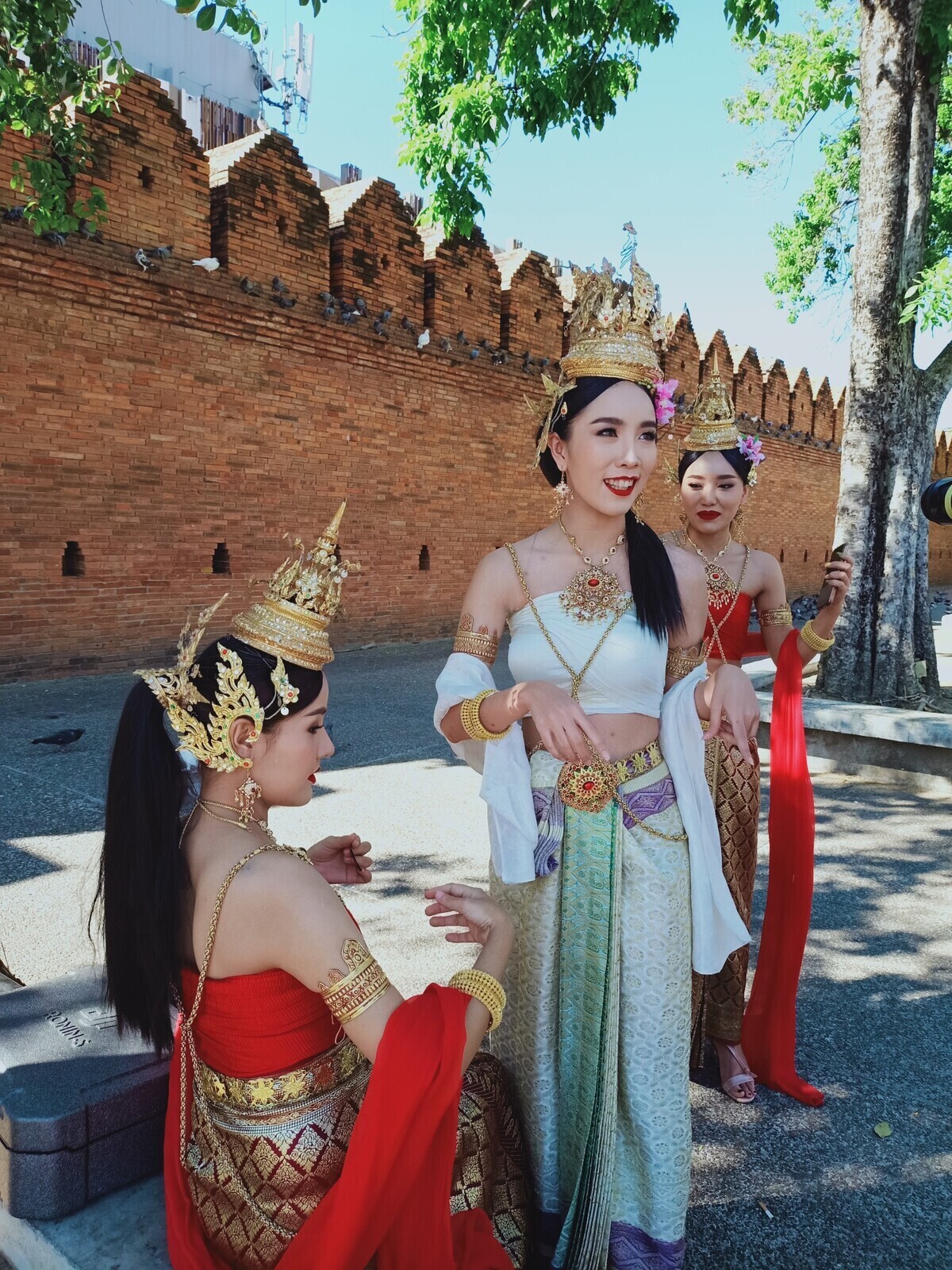Chiang Mai: The Old City
You’ve probably already noticed it on the map: Chiang Mai is a big square. "Chiang" is the Thai word for "city", and "Mai" means "new". So, “New City” — although it’s not so new anymore, as it was founded around the year 1300, complete with a large surrounding wall.
Chiang Mai was once the capital of the kingdom of Lan Na — which explains why you see the word "Lanna" everywhere in town: Lanna Massage, Lanna Toyota, Lanna Restaurant. Around 1900, Lan Na became part of Siam, which later became Thailand.
Of the original city wall, only the corners still look somewhat authentic today, but the moat around the old city is still fully intact. The gates — North Gate, West Gate, two South Gates — each has its own Thai name, and the most well-known is Tha Phae Gate on the eastern side. All these gates were reconstructed sometime last century as a tribute to Chiang Mai’s history… so no, these aren’t the original centuries-old gates.
Thai cities typically don’t have a central square with a church and cafés like in Europe. In Chiang Mai, Tha Phae Gate somewhat takes on the role of a town center. It used to be the city’s most important gate because a lot of traffic came from the river. "Tha Phae" roughly means "boat landing spot". If something’s going on in Chiang Mai, it’s usually happening right in front of this gate — marathons, traditional markets, weekend after weekend. And it’s also the gateway to Chiang Mai’s biggest weekly event: the **Sunday Night Market**. A must-visit if you’re in town over the weekend. There’s also a **Saturday Night Market**, which is smaller and a bit calmer, starting at one of the southern gates every Saturday evening.
Once you step inside the square and start walking, you’ll notice how peaceful the old city feels. The hustle and bustle is mostly outside the square. Inside, you’ll find lots of small streets, dozens of temples, and plenty of little shops for food, coffee, massage — and in the evening, bars and restaurants.
And here’s a fun fact: Chiang Mai isn’t actually a perfect square. The southern edge is 50 meters shorter than the northern one — so technically, it’s a trapezoid!
